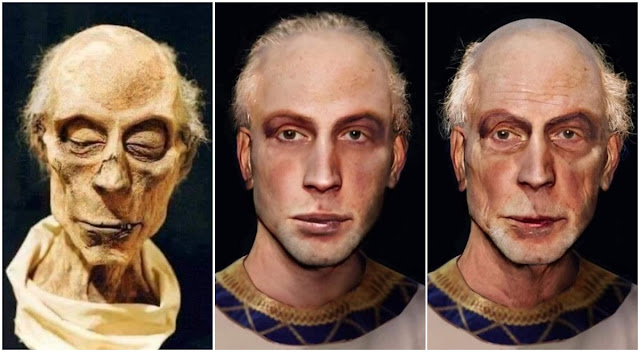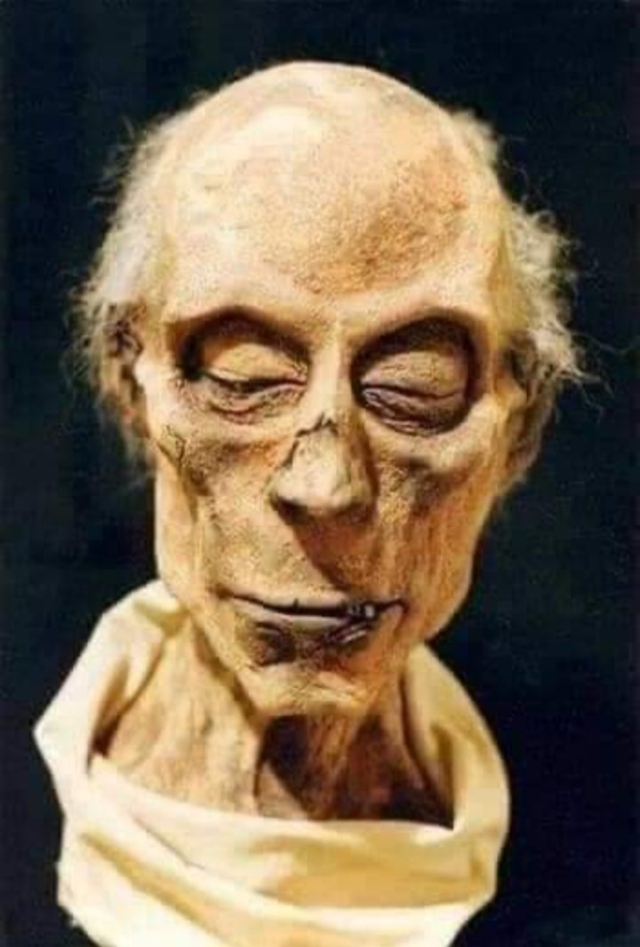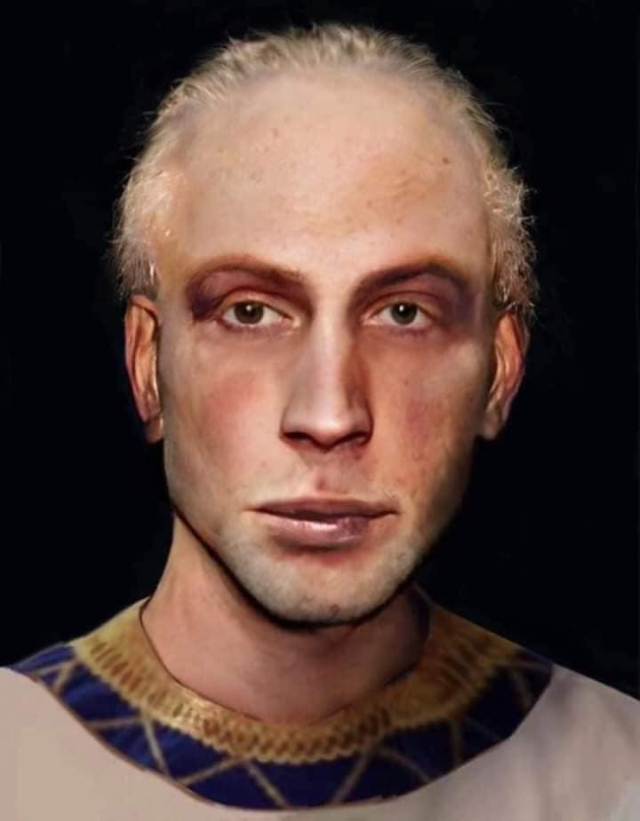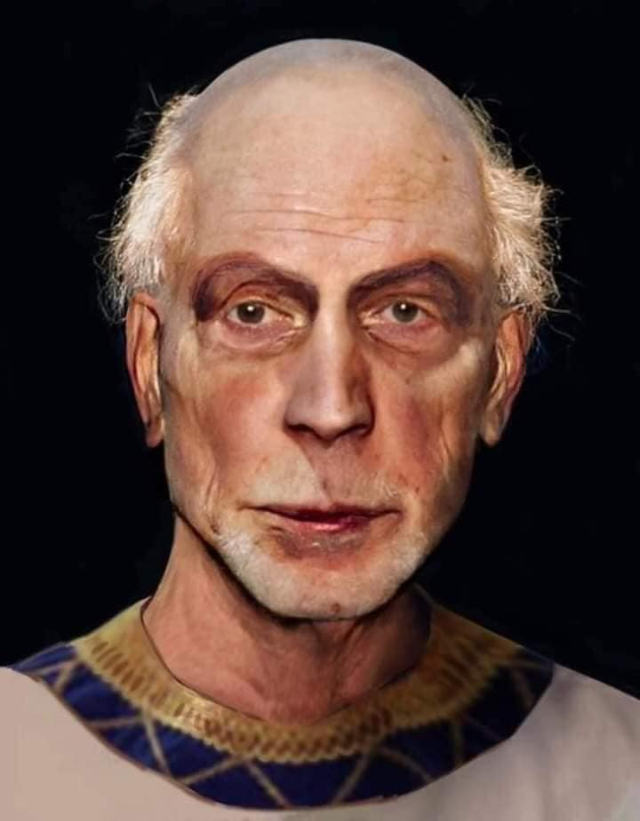Artificial Intelligence reconstruction of what Pharaoh Ramses II may have looked like (1,303 – 1,213 BC).

Ramesses II also known as Ramesses the Great, was the third pharaoh of the Nineteenth Dynasty of Egypt. He is often regarded as the greatest, most celebrated, and most powerful pharaoh of the New Kingdom, itself the most powerful period of Ancient Egypt. His successors and later Egyptians called him the “Great Ancestor”. He is known as Ozymandias in Greek sources, from the first part of Ramesses’s regnal name, Usermaatre Setepenre, “Th Chosen of Ra”. Ramesses II led several military expeditions into the Levant, reasserting Egyptian control over Canaan. He also led expeditions to the south, into Nubia, commemorated in inscriptions at Beit el-Wali and Gerf Hussein. The early part of his reign was focused on building cities, temples, and monuments. He established the city of Pi-Ramesses in the Nile Delta as his new capital and used it as the main base for his campaigns in Syria. At fourteen, he was appointed prince regent by his father, Seti I. He is believed to have taken the throne in his late teens and is known to have ruled Egypt from 1279 to 1213 BC. Manetho attributes Ramesses II a reign of 66 years and 2 months; most Egyptologists today believe he assumed the throne on 31 May 1279 BC, based on his known accession date of III Season of the Harvest, day 27. Estimates of his age at death vary; 90 or 91 is considered most likely. Ramesses II celebrated an unprecedented thirteen or fourteen Sed festivals (the first held after 30 years of a pharaoh’s reign, and then, every three years) during his reign—more than any other pharaoh. On his death, he was buried in a tomb in the Valley of the Kings; his body was later moved to a royal cache where it was discovered in 1881, and is now on display in the Egyptian Museum. 


In 1975, Maurice Bucaille, a French doctor, examined the mummy at the Cairo Museum and found it in poor condition. French President Valéry Giscard d’Estaing succeeded in convincing Egyptian authorities to send the mummy to France for treatment. In September 1976, it was greeted at Paris–Le Bourget Airport with full military honors befitting a king, then taken to a laboratory at the Musée de l’Homme. The mummy was forensically tested by Professor Pierre-Fernand Ceccaldi, the chief forensic scientist at the Criminal Identification Laboratory of Paris. Professor Ceccaldi determined that: “Hair, astonishingly preserved, showed some complementary data — especially about pigmentation: Ramesses II was a ginger haired ‘cymnotriche leucoderma’.” The description given here refers to a fair-skinned person with wavy ginger hair. Subsequent microscopic inspection of the roots of Ramesses II’s hair proved that the king’s hair originally was red, which suggests that he came from a family of redheads. This has more than just cosmetic significance: in ancient Egypt people with red hair were associated with the deity Set, the slayer of Osiris, and the name of Ramesses II’s father, Seti I, means “follower of Seth”. After being irradiated in an attempt to eliminate fungi and insects, the mummy was returned from Paris to Egypt in May 1977.


